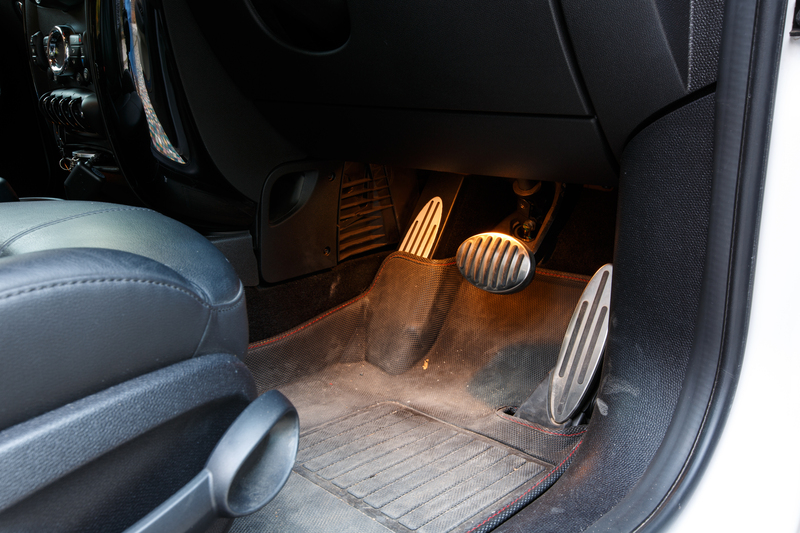Easy DIY Solutions for Tackling Hard-to-Clean Burnt Residues on Stovetops
Posted on 22/05/2025
Easy DIY Solutions for Tackling Hard-to-Clean Burnt Residues on Stovetops
Burnt residues on stovetops can feel like a kitchen nightmare. Whether it's a result of a pot boiling over or a spill during a cooking frenzy, tough, stuck-on stains are not just unsightly--they can be surprisingly difficult to remove. Before you reach for harsh and expensive commercial cleaners, consider several easy DIY methods for burnt stove cleanup that use simple, household ingredients. Not only are these techniques effective, but they're also safer for your family and gentle on your appliances.
Why Cleaning Burnt Residue is Important
A neglected stovetop isn't just about appearance. Layers of burnt food can:
- Diminish appliance performance
- Cause unpleasant odors
- Harbor bacteria and promote cross-contamination
- Potentially lead to kitchen fires

Understanding Your Stovetop Surface
Before diving into cleaning burnt stovetops, identify your surface type:
- Gas stovetops - feature removable burner grates and caps
- Electric coil stovetops - have raised coils sitting above a metal drip pan
- Smooth glass or ceramic stovetops - require special care to prevent scratches
Common Causes of Burnt-On Residues
Sometimes knowing what causes hard-to-clean burnt-on spills can help you prevent them in future. The most common culprits include:
- Boil-overs - from soups, pasta water, or milk
- Overheating oils that splatter and burn
- Cooking at high heat without paying attention
- Forgetting to wipe up small spills immediately
With a bit of mindfulness and the right techniques, you can address and prevent burned residue buildup.
Immediate Action vs. Stubborn Stains
If you catch a spill when it's fresh, a quick wipe with soapy water is often enough. However, burnt residues left until cool or for several cooking sessions become much tougher to remove.
- For fresh spills, use a damp microfiber cloth and mild dish soap.
- For hardened burnt-on stains, you'll need more robust DIY solutions.
Best Homemade Solutions for Burnt Residue Removal
1. Baking Soda and Vinegar Magic
Baking soda and white vinegar are legendary for cut-through grime thanks to their natural cleaning powers:
- Sprinkle a generous layer of baking soda over the burnt area.
- Carefully pour or spray white vinegar onto the baking soda until it foams.
- Let the mixture sit for 15-30 minutes to break down the burnt residue.
- Gently scrub using a soft sponge or non-abrasive pad.
- Wipe away the paste and check--repeat as needed for stubborn spots.
2. Lemon Juice Power
Lemon's citric acid acts as a natural degreaser and stain remover:
- Cut a lemon in half and rub it directly on the burnt stove stains.
- Allow the juice to rest on the spot for a few minutes.
- Scrub gently with a damp sponge or cloth, then wipe clean with water.
3. The Salt Paste Solution
Salt is a gentle abrasive that won't scratch most surfaces.
- Mix salt with a little water to form a thick paste.
- Apply the paste directly onto burned residues.
- Let it sit for 10 minutes before scrubbing gently and wiping clean.
4. Dish Soap and Hot Water Soak
Stubborn burnt-on residue can sometimes soften with patience:
- Fill a shallow bowl with hot water and dish soap.
- Soak removable grates or drip pans for 30-60 minutes.
- Scrub with a brush and rinse well--repeat if needed.
5. The Power of Steam
Steam effectively loosens and dissolves hardened stovetop residues:
- Boil a pan of water directly on the burner so the steam targets stained areas.
- Turn off heat and (when safe to touch) wipe the loosened residue with a cloth.
DIY Tools For Safe and Effective Stovetop Cleaning
The right tools make a big difference. Never use metal scouring pads or knives, which may scratch or chip the stovetop. Instead, opt for:
- Microfiber cloths: Gentle and effective
- Non-abrasive sponges
- Silicone or plastic scrapers for glass and ceramic tops
- Old toothbrushes for corners and crevices
Special Tips for Different Stovetop Materials
Cleaning Glass and Ceramic Stovetops
These sleek surfaces require delicate care:
- Never use rough scrubbers, which can leave permanent marks.
- After using baking soda paste, gently scrape off residue with a plastic scraper held at a 45-degree angle.
- Buff with a microfiber cloth for a streak-free shine.
Restoring Shine to Stainless Steel Stoves
Stainless steel is prone to water spots--but it's also durable:
- Use the baking soda and vinegar method, following the direction of the metal's grain.
- Rinse thoroughly and buff with a little olive oil for a showroom shine.
Caring for Gas Burners and Grates
Burner caps and grates often harbor the worst burnt-on grime:
- Remove grates and soak in soapy hot water.
- Use salt paste or baking soda to scrub tight spots.
- For persistent stains, try a paste of hydrogen peroxide and baking soda, let it sit, then scrub and rinse thoroughly.
Troubleshooting Especially Tough Burnt-On Spots
Some residues defy your first attempts. Here's how to tackle extreme cases:
- Repeat soaks and scrubs - patience pays off
- Apply a thick layer of paste and cover with a damp cloth overnight
- For glass stoves, use a specialized razor scraper designed for cooktops--but only as a last resort and with great care
- Avoid mixing chemicals (like bleach and ammonia), which can create dangerous fumes
Preventing Future Build-Up and Burnt Residues
An ounce of prevention is worth a pound of burnt-on cure:
- Wipe up spills immediately after cooking, when the stovetop is cool but stains haven't hardened
- Use splatter guards and lids to minimize messes
- Clean your stove weekly with mild soapy water as part of your regular routine
- For glass and ceramic stoves, avoid using pans with rough or dirty bottoms that can cause scratches or new stains
Natural Cleaning Alternatives--Why Go DIY?
Store-bought cleaners often contain harsh chemicals that may irritate skin, damage stove finishes, or leave harmful residues near food preparation surfaces. DIY stovetop cleaning methods have many advantages:
- Inexpensive--uses common pantry items
- Safe for your family and pets
- Eco-friendly: Reduces chemical runoff and packaging waste
- Just as effective as most commercial stove cleaners

Frequently Asked Questions About Burnt Residue Stove Cleaning
Is baking soda safe for all stovetops?
Yes, baking soda is generally safe for glass, ceramic, stainless steel, and enamel. As a soft abrasive, it lifts stuck debris without scratching. Avoid letting it get into gas burner ports or electric elements.
Can I use vinegar on any stovetop?
Vinegar is excellent for stainless steel, enamel, and glass, but avoid using it on cast iron or aluminum parts, as it can damage those metals over time.
Are there burnt residues that just won't come off?
While most DIY cleaning tips for burnt residue are highly effective, some stains may be permanent if they've etched into glass or ceramic over time. Regular cleaning prevents these tough cases.
Conclusion: A Sparkling Stove, the Easy DIY Way
You don't need specialty products or endless elbow grease to restore your stovetop's shine. With baking soda, vinegar, salt, lemon, and a little patience, anyone can tackle even the most stubborn burnt-on residues. Adopt a simple cleaning routine with these easy DIY stovetop cleaning solutions, and your kitchen will stay spotless, safe, and inviting. Happy cleaning!




